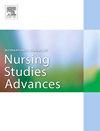影响临床护理和助产学研究利用的障碍和促进因素:一项探索性质的研究
IF 3.1
Q1 NURSING
International Journal of Nursing Studies Advances
Pub Date : 2025-06-01
DOI:10.1016/j.ijnsa.2025.100354
引用次数: 0
摘要
背景:研究利用在循证实践中至关重要,可以提高患者的治疗效果和服务提供者的专业性。尽管它很重要,但由于各种障碍,在护理和助产方面的实施仍然很低。了解这些障碍并确定促进因素可以为提高研究利用和促进循证实践的战略提供信息。目的:探讨加纳库马西临床护理助产实践中影响科研成果应用的障碍和促进因素,以及促进科研成果应用的策略。设计:采用定性描述方法。研究背景:加纳6家医院参与者:120名临床护士和助产士方法:目的性抽样,进行17次焦点小组讨论,收集数据并进行记录和转录。Braun和Clarke的主题分析采用了研究利用的步骤:获取、分析、传播和实施作为指导框架。本研究采用Lincoln和Guba的可信度标准。结果:确定了三个主题:障碍、促进因素和策略。障碍包括缺乏资源(物质、财政和时间)以及由于护理和助产教育不足而导致的研究知识不足。促进者包括持续专业发展和高等教育。在医院设立指定的研究单位是提高研究利用的战略的一部分。结论:研究结果对医疗保健实践具有重要意义,表明需要改善资源、教育和组织支持,以促进研究的利用。应进一步研究护士和助产士的准备工作,以便在其教育中进行研究利用,并就护理和助产学的充分研究教育提出建议。本文章由计算机程序翻译,如有差异,请以英文原文为准。
Barriers and facilitators influencing research utilization in clinical nursing and midwifery: an exploratory qualitative study
Background: Research utilization is critical in evidence-based practice, enhancing patient outcomes and professionalism of service providers. Despite its importance, implementation in nursing and midwifery remains low due to various barriers. Understanding these barriers and identifying facilitators can inform strategies to enhance research utilization and promote evidence-based practice.
Objective: To explore the barriers and facilitators influencing research utilization as well as strategies to promote it in clinical nursing and midwifery practice in Kumasi, Ghana.
Design: A qualitative descriptive methodology was employed.
Setting: Six hospitals in Ghana
Participants: One hundred and twenty clinical nurses and midwives
Methods: Purposive sampling with seventeen focus group discussions was held to collect data which were recorded and transcribed. Braun and Clarke’s thematic analysis was applied using the steps of research utilization: access, analysis, dissemination, and implementation as a guiding framework. Lincoln and Guba’s criteria of trustworthiness were applied in the study.
Results: Three themes were identified: barriers, facilitators, and strategies. Barriers included lack of resources (physical, financial, and time) and inadequate research knowledge due to deficiencies in nursing and midwifery education. Facilitators comprised continuous professional development and higher education. Having designated research units in hospitals was part of the strategies to improve research utilization.
Conclusion: The findings have significant implications for healthcare practice, suggesting the need for improved resources, education, and organizational support to promote research utilization. Further studies on the preparation of nurses and midwives for research utilization in their education should be conducted, and recommendations made for adequate research education in nursing and midwifery.
求助全文
通过发布文献求助,成功后即可免费获取论文全文。
去求助
来源期刊

International Journal of Nursing Studies Advances
Nursing-General Nursing
CiteScore
5.80
自引率
0.00%
发文量
45
审稿时长
81 days
 求助内容:
求助内容: 应助结果提醒方式:
应助结果提醒方式:


